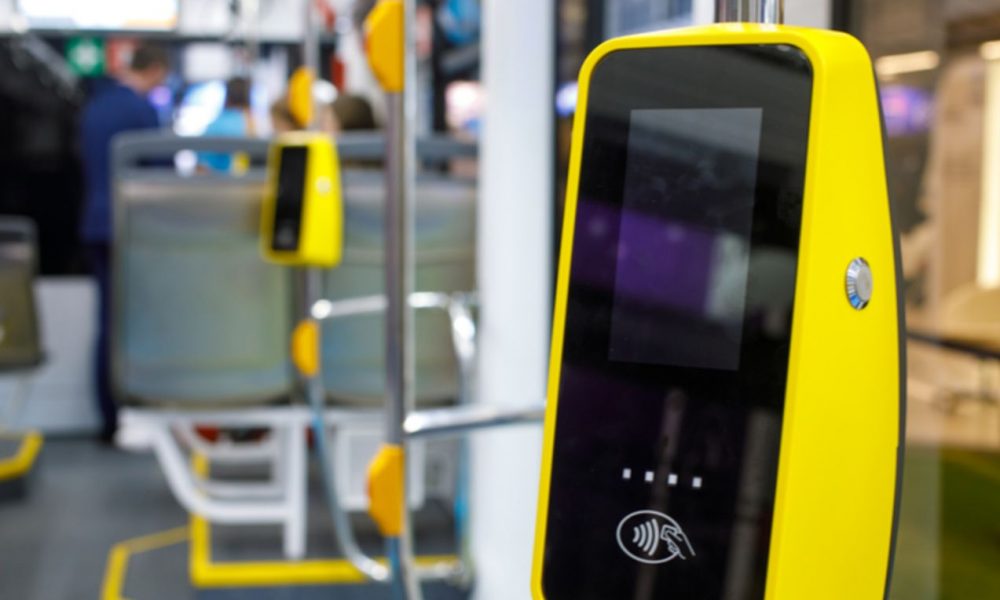A comprehensive analysis of the electronic fare collection systems effectiveness implementation on public transit and prospective directions of its application in Ukraine
DOI:
https://doi.org/10.15587/2706-5448.2023.286614Keywords:
public transit, electronic fare collection systems, smart card, fare system, integrated transport systemAbstract
The object of research is the effectiveness of the implementation of electronic fare collection systems on public transit. Applying the electronic fare collection systems is a general trend in improving public transport services for users. In the pre-war period, the systems began to be implemented in many cities of Ukraine. At the same time, this activity was not of a systemic nature and at the current stage it is mainly considered as a means of ensuring more convenient conditions for the use of scheduled passenger transport services for passengers. The article focuses on a broader understanding of the effectiveness of the fare collection systems implementation, their role in ensuring the internal integration of the multi-modal public transport system, increasing the operational efficiency, providing the safety of transportation and increasing the attractiveness of public transit services for the population as a real alternative for the private cars to use. The implementation efficiency of the electronic fare collection systems in public transit should be expressed through various aspects. There are 9 aspects to be considered: system integration; comfort ensuring; transportation safety assistance; operational efficiency and passengers' travel time reduction; integration into the management and planning systems; implementation of the flexible fare system; conduction of the flexible fare policy; development of reasonable income distribution system; increase of the scheduled passenger transport services attractiveness. It is suggested to use systemic approach for integrated multimodal public transit system creation. It requires the development of an intelligent transport system that would integrate separate functions of the electronic fare collection system into controlling, managing and planning subsystems. The practical introduction of the solutions proposed regarding the prospects to develop electronic fare collection systems in the cities of Ukraine will make it possible to increase the efficiency of their use and contribute to the improvement of the quality of transport services for passengers.
References
- Hora, J., Dias, T. G., Camanho, A., Sobral, T. (2017). Estimation of Origin-Destination matrices under Automatic Fare Collection: the case study of Porto transportation system. Transportation Research Procedia, 27, 664–671. doi: https://doi.org/10.1016/j.trpro.2017.12.103
- Pelletier, M.-P., Trépanier, M., Morency, C. (2011). Smart card data use in public transit: A literature review. Transportation Research Part C: Emerging Technologies, 19 (4), 557–568. doi: https://doi.org/10.1016/j.trc.2010.12.003
- Kim, H., Faroqi, M., Mesbah, J. (2018). Applications of transit smart cards beyond a fare collection tool: a literature review. Advances in Transportation Studies, 45, 107–122.
- Mohamed, K., Côme, E., Baro, J., Oukhellou, L. (2014). Understanding passenger patterns in public transit through smart card and socioeconomic data. ACM SIGKDD Workshop on Urban Computing.
- Morency, C., Trépanier, M., Agard, B. (2007). Measuring transit use variability with smart-card data. Transport Policy, 14 (3), 193–203. doi: https://doi.org/10.1016/j.tranpol.2007.01.001
- Ma, X., Wu, Y.-J., Wang, Y., Chen, F., Liu, J. (2013). Mining smart card data for transit riders’ travel patterns. Transportation Research Part C: Emerging Technologies, 36, 1–12. doi: https://doi.org/10.1016/j.trc.2013.07.010
- Zhao, J., Zhang, F., Tu, L., Xu, C., Shen, D., Tian, C., Li, X.-Y., Li, Z. (2017). Estimation of Passenger Route Choice Pattern Using Smart Card Data for Complex Metro Systems. IEEE Transactions on Intelligent Transportation Systems, 18 (4), 790–801. doi: https://doi.org/10.1109/tits.2016.2587864
- Arbex, R., Cunha, C. B. (2020). Estimating the influence of crowding and travel time variability on accessibility to jobs in a large public transport network using smart card big data. Journal of Transport Geography, 85, 102671. doi: https://doi.org/10.1016/j.jtrangeo.2020.102671
- Bieler, M., Skretting, A., Budinger, P., Gronli, T.-M. (2022). Survey of Automated Fare Collection Solutions in Public Transportation. IEEE Transactions on Intelligent Transportation Systems, 23 (9), 14248–14266. doi: https://doi.org/10.1109/tits.2022.3161606
- Jittrapirom, P., Caiati, V., Feneri, A.-M., Ebrahimigharehbaghi, S., González, M. J. A., Narayan, J. (2017). Mobility as a Service: A Critical Review of Definitions, Assessments of Schemes, and Key Challenges. Urban Planning, 2 (2), 13–25. doi: https://doi.org/10.17645/up.v2i2.931

Downloads
Published
How to Cite
Issue
Section
License
Copyright (c) 2023 Denys Ponkratov, Denys Kopytkov, Victor Dolya

This work is licensed under a Creative Commons Attribution 4.0 International License.
The consolidation and conditions for the transfer of copyright (identification of authorship) is carried out in the License Agreement. In particular, the authors reserve the right to the authorship of their manuscript and transfer the first publication of this work to the journal under the terms of the Creative Commons CC BY license. At the same time, they have the right to conclude on their own additional agreements concerning the non-exclusive distribution of the work in the form in which it was published by this journal, but provided that the link to the first publication of the article in this journal is preserved.








